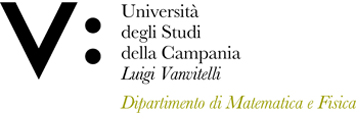Luigi CORAGGIO
Insegnamento di THEORETICAL PHYSICS
Corso di laurea magistrale in PHYSICS
SSD: FIS/02
CFU: 8,00
ORE PER UNITÀ DIDATTICA: 68,00
Periodo di Erogazione: Primo Semestre
Italiano
| Lingua di insegnamento | INGLESE |
English
| Teaching language | English |
| Contents | Synthetic Program: |
| Textbook and course materials | General reference books |
| Course objectives | LEARNING OUTCOMES: |
| Prerequisites | Basic knowledge of Quantum Mechanics |
| Teaching methods | The course is structured in 56 hours of frontal lectures and |
| Evaluation methods | During the course the students’ assessment will be performed by a written tests that includes one or two problems about topics that have been covered during a specific segment of the course. Students will be allowed consulting one specific text during the written tests.If the outcome of these tests will not be overall satisfactory, it is mandatory to pass a written test including problems about all topics covered during the course. |
| Course Syllabus | Detailed Program |








